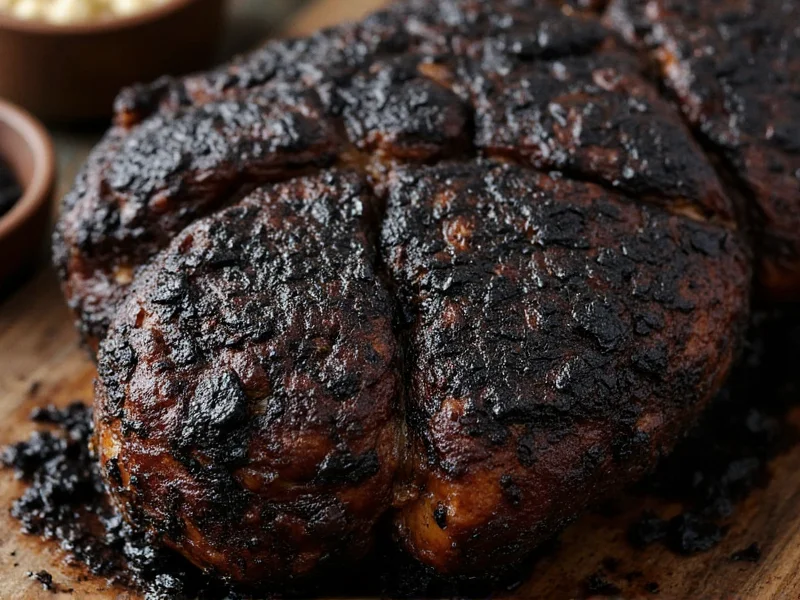Understanding the Blackening Cooking Technique
Blackening is a distinctive culinary method that transforms ordinary proteins into flavorful masterpieces through a specific high-heat cooking process. Unlike simple grilling or searing, blackening involves coating food with a special spice blend before cooking it in an extremely hot cast-iron skillet. The intense heat causes the spices to toast and slightly char, creating a dark, flavorful crust that gives the technique its name.
What makes blackened cooking unique is that the dark color comes from the spices caramelizing and lightly charring, not from burning the food itself. When properly executed, blackened dishes feature a dark brown to nearly black exterior with complex flavors, while the interior remains moist and perfectly cooked.
Historical Origins of Blackened Cooking
The blackening technique emerged from Cajun cuisine in Louisiana, with its modern popularization credited to Chef Paul Prudhomme in the 1980s. While traditional Cajun cooking included spice-rubbed proteins, Prudhomme refined and popularized the specific high-heat skillet method that defines contemporary blackened cooking.
Originally developed as a way to cook food quickly over open flames, the technique evolved to use cast-iron skillets as indoor cooking became more common. The method gained national attention when Prudhomme introduced blackened redfish at his New Orleans restaurant, K-Paul's Louisiana Kitchen, creating a culinary phenomenon that spread across American restaurants.
Blackening vs. Other Cooking Methods
Many people confuse blackening with similar cooking techniques, but key differences exist:
| Cooking Method | Temperature | Spice Application | Resulting Texture |
|---|---|---|---|
| Blackening | Extremely high (500°F+) | Generous dry spice rub | Charred spice crust, moist interior |
| Searing | High (400-450°F) | Minimal seasoning | Browned surface, caramelized flavors |
| Grilling | Medium-high (350-450°F) | Variety of seasonings | Char marks, smoky flavor |
| Smoking | Low (225-275°F) | Dry rubs or wet marinades | Tender, smoky throughout |
The critical distinction of blackened food is that the dark color comes specifically from the spices charring, not from the food itself burning. Properly blackened items should have a dark, flavorful crust with no bitter, burnt flavors.
Essential Components of Blackening Spice Mix
The signature blackened flavor comes from a specific spice blend that typically includes:
- Paprika (provides color and base flavor)
- Cayenne pepper (adds heat)
- Garlic powder
- Onion powder
- Dried thyme
- Dried oregano
- Black pepper
- White pepper
- Salt
- Some variations include cumin or chili powder
Unlike Cajun seasoning (which tends to be salt-heavy), authentic blackening spice contains less salt since the food is typically seasoned separately. The high proportion of paprika gives blackened dishes their characteristic dark color when exposed to extreme heat.
Popular Blackened Dishes and Ingredients
While blackened redfish started the trend, numerous proteins work well with this technique:
- Fish: Redfish, salmon, catfish, and mahi-mahi are excellent choices for blackening
- Poultry: Chicken breasts, thighs, and even turkey cutlets
- Meat: Lean cuts of beef like sirloin or tenderloin
- Vegetables: Some chefs blacken portobello mushrooms or thick vegetable slices
When selecting ingredients for blackening, choose firm-textured foods that won't fall apart during the high-heat cooking process. The food should have enough surface area to develop the characteristic spice crust while protecting the delicate interior.
How to Blacken Food at Home Successfully
Creating authentic blackened dishes at home requires specific techniques:
- Dry the surface: Pat protein completely dry with paper towels
- Apply spice rub generously: Press the spice mixture firmly onto all surfaces
- Preheat cast-iron skillet: Heat until smoking hot (this is crucial)
- Add minimal fat: Just enough oil to prevent sticking
- Cook briefly: 2-3 minutes per side depending on thickness
- Control smoke: Turn on ventilation and be prepared for smoke
Many home cooks struggle with blackening because they don't heat their skillet sufficiently. The skillet must be extremely hot to properly sear the spices without overcooking the interior. Expect significant smoke during the process - this is normal but requires good kitchen ventilation.
Health Considerations of Blackened Cooking
While delicious, blackened cooking raises some nutritional considerations. The high-heat process can create heterocyclic amines (HCAs), compounds that form when meat is cooked at very high temperatures. To minimize potential health concerns:
- Don't burn the food - the spices should darken but not become bitter
- Marinate proteins before blackening (acidic marinades may reduce HCA formation)
- Pair blackened dishes with antioxidant-rich vegetables
- Enjoy blackened foods in moderation as part of a balanced diet
When properly executed, blackened cooking creates a flavorful crust with minimal added fat, making it a relatively healthy preparation method compared to frying.
Common Misconceptions About Blackened Food
Several myths surround blackened cooking that deserve clarification:
- Myth: Blackened food is burnt
Reality: Properly blackened food has a charred spice crust but isn't burnt; it should have complex, not bitter, flavors - Myth: Blackened and Cajun mean the same thing
Reality: All blackened dishes use Cajun-inspired spices, but not all Cajun dishes are blackened - Myth: Blackening requires special equipment
Reality: While a cast-iron skillet works best, you can adapt the technique for grill or broiler - Myth: Blackened food is always extremely spicy
Reality: Heat level depends on cayenne content; you can adjust spice blend to preference











 浙公网安备
33010002000092号
浙公网安备
33010002000092号 浙B2-20120091-4
浙B2-20120091-4